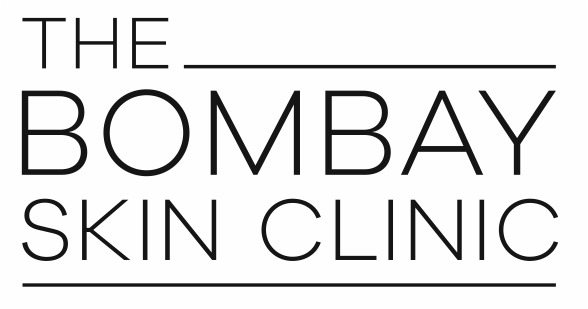Overview | Facts and Benefits | Conditions Treated with Dermapen | Treatment Steps and Results | Risks and Future Skincare
Dermapen is the latest advanced development in microneedling technology. It is a skin microneedling treatment that causes minimal pain and requires zero downtime. It is used to treat a multitude of skin conditions. It promotes natural collagen production, as noted by the National Center for Biotechnology Information.
It is a breakthrough device that makes use of the most advanced needle cartridge innovation to vertically pierce the skin. It glides well, creating millions of fine fractional channels up to 104% faster than any other microneedling device. These channels can carry up to 80% more topic nutrients deeper into the skin for better results and better skin nourishment. It works faster and safer and produces optimal results. Thousands of practitioners endorse Dermapen as world-leading technology that helps to renew skin.
In this article, I will take you through the specifics of the Dermapen treatment and help answer some frequently asked questions as put forward by many of my patients.
What are some important facts about Dermapen?
Some important facts to note about the Dermapen are that it:
- Is non-invasive and virtually painless
- Is safe for most people who are in good health overall
- Is not safe for people with certain types of acne
- Is not safe for expecting mothers and those who use certain acne medications
- Takes around one to two hours per procedure
- Is far more effective than at-home rollers
- Is ideal for getting brighter, firmer skin
As per Harvard Health Publishing, microneedling can offer mild to moderate improvements but not dramatic results.
What are the main benefits of Dermapen?
The Dermapen is known for greatly improving topical cream effectiveness and penetration. It also stimulates collagen production and blood circulation. The needles used are non-allergenic. It works on mostly all types of skins and various body parts like the neck, mouth, and all areas around the eyes, face, and scalp.
Which conditions can the Dermapen treat?
The Dermapen is used to treat androgenetic alopecia and alopecia areata. It can also be used to treat pores and for lip brightening, hand rejuvenation, and neck rejuvenation.
It is also used to treat acne, fine lines and wrinkles around the eyes, dark circles, scarring, cellulite, stretch marks, pigmentation marks from sun damage or acne, and for tattoo removal. It is also used for facial rejuvenation. Usually, it is used on the face to target uneven skin tone, reduced skin elasticity, large pores, and age spots. It can also help to get plumper skin and is also used for hair restoration.
What questions should you ask the dermatologist before going for a Dermapen treatment?
I encourage my patients to ask as many questions as they can regarding the treatment; the more they know, the better prepared they will be to undergo the microneedling procedure. Some questions to ask are:
- What is the Dermapen treatment?
- Am I an ideal candidate for the procedure?
- How is the procedure carried out?
- What are the results that I can expect?
- Are there any risks or side-effects?
- Is there any downtime required?
- How many sessions will I require?
- How long do the results last?
- What should my post-treatment skincare routine be?
What are the different types of Dermapens used by dermatologists?
The various types of Dermapens used by dermatologists depend on the skin condition being treated.
- For cosmetic needs: This is a mesotherapy microneedle with a needle length of only 0.13 or 0.25, to facilitate the absorption of vitamins and topical medications.
- For skin surfaces covered with hair: The needle length of this is 0.2 mm and it is prescribed for infusion of topicals.
- For alopecia treatments: The needle length may be 0.75mm to 1.5 mm.
- For collagen induction therapy: The needle length is 0.5 mm to 1.0. mm.
- For skin microneedling: The needle length is 1.5mm, to create deeper micro-injuries to penetrate the epidermal and dermis layers.
- For acne scar: The needle length is 1.5 to 2.5 mm. The needle penetration is so quick that it does not leave the skin irritated or damaged.
How does the Dermapen work?
The Dermapen uses small needles to cause tiny punctures on your skin surface and doesn’t go any deeper, as noted by the Stanford Health Care. This encourages the body to start a wound- healing process to renew skin cells. While the skin repairs itself, the serum growth factors promote new collagen and elastin growth. The treatment is based on the natural rejuvenation power of the skin, where shortly after injury the old and damaged skin dissolves and is replaced by new skin cells.
What are the treatment steps?
At The Bombay Skin Clinic, I use the Dermapen 4 for this microneedling treatment. I use the pen-like device to make small pricks under the skin, known as rejuvenating fractional micro-channels, which are so small that you will hardly notice them. The tool is moved evenly across the skin so that the new skin that results will be even as well. The AVON technology automatically calibrates the motor speed, pressure, and penetration for targeted precision. I may use a topical anesthetic to reduce any chances of pain. After the process is complete, I apply a serum or calming treatment, post which you can relax in the clinic for some time.
How safe is the treatment? Does it hurt?
The Dermapen treatment is very safe and non-invasive, as noted by the Indian Dermatology Online Journal. It does cause you to feel some pricks of the microneedles, so be prepared for that. I usually apply a numbing cream to help minimize pain felt during the procedure.
What results can you expect after the treatment?
This is a popular question that I get from my patients. Generally, you will see results for skin rejuvenation within six to eight weeks post-procedure. Over time, the results do continue to improve. Every 45 days, your skin naturally heals itself, so with a Dermapen treatment, the healing will be quickened. At The Bombay Skin Clinic, I recommend a course of treatments for optimal results. Your skin will be noticeably smoother and more radiant.
How many sessions will be required?
For many of my patients, just one session of the Dermapen treatment is enough for them to get the desired result. However, depending on the skin type and needs, certain patients may need multiple sessions. Generally, I recommend safely repeating this session four to six weeks as needed for a minimum of three treatments.
Are there any risk/side-effects after the treatment?
The Dermapen treatment that I perform at The Bombay Skin Clinic is very effective and safe. It is a minimally invasive procedure, so any side-effects usually go away within one or two days. I caution my patients that the treatment may cause some skin tightness, itching, stinging, and erythema.
What are the immediate and future steps to take care of your skin?
Immediately after the procedure, you should protect your skin from the sun. I may recommend a skin care routine to help tackle the temporary swelling, redness, or dryness. Avoid scrubbing your face or touching it too often. Moving on, you should use a gentle face cleanser every night and apply only mild make-up products without harsh chemicals. Use a gentle sunscreen whenever stepping out into the sun and avoid smoking for better skin health. Do not use retinol products on your skin for two to three days.
Closing thoughts
The Dermapen is the latest in advanced microneedling technology. It can help to solve a number of skin-related issues, so why wait any longer? I am here to help rejuvenate and transform your skin by doing away with a range of skin woes! Book a consultation with me today and let’s uncover your most beautiful version!
References
- National Center for Biotechnology Information: https://www.ncbi.nlm.nih.gov/pmc/articles/PMC5556180/
- Indian Dermatology Online Journal: http://www.idoj.in/article.asp?issn=2229-5178;year=2016;volume=7;issue=4;spage=244;epage=254;aulast=Singh
- Harvard Health Publishing: https://www.health.harvard.edu/staying-healthy/needling-your-way-to-healthier-skin
- Stanford Health Care: https://stanfordhealthcare.org/medical-treatments/m/microneedling.html

 Dr. Batul Patel is a celebrity dermatologist and the medical director of The Bombay Skin Clinic an award winning clinic located in South Mumbai & Bandra. She is a passionate and dedicated dermatologist with expertise in all fields of dermatology, trichology and aesthetic dermatology. She has been practicing for more than a decade. Her range of expertise include emsculpt NEO, coolsculpting, fillers, acne treatment, lasers, skin rejuvenation, hair loss, hair transplant, PRP & pigmentation treatments.
Dr. Batul Patel is a celebrity dermatologist and the medical director of The Bombay Skin Clinic an award winning clinic located in South Mumbai & Bandra. She is a passionate and dedicated dermatologist with expertise in all fields of dermatology, trichology and aesthetic dermatology. She has been practicing for more than a decade. Her range of expertise include emsculpt NEO, coolsculpting, fillers, acne treatment, lasers, skin rejuvenation, hair loss, hair transplant, PRP & pigmentation treatments.